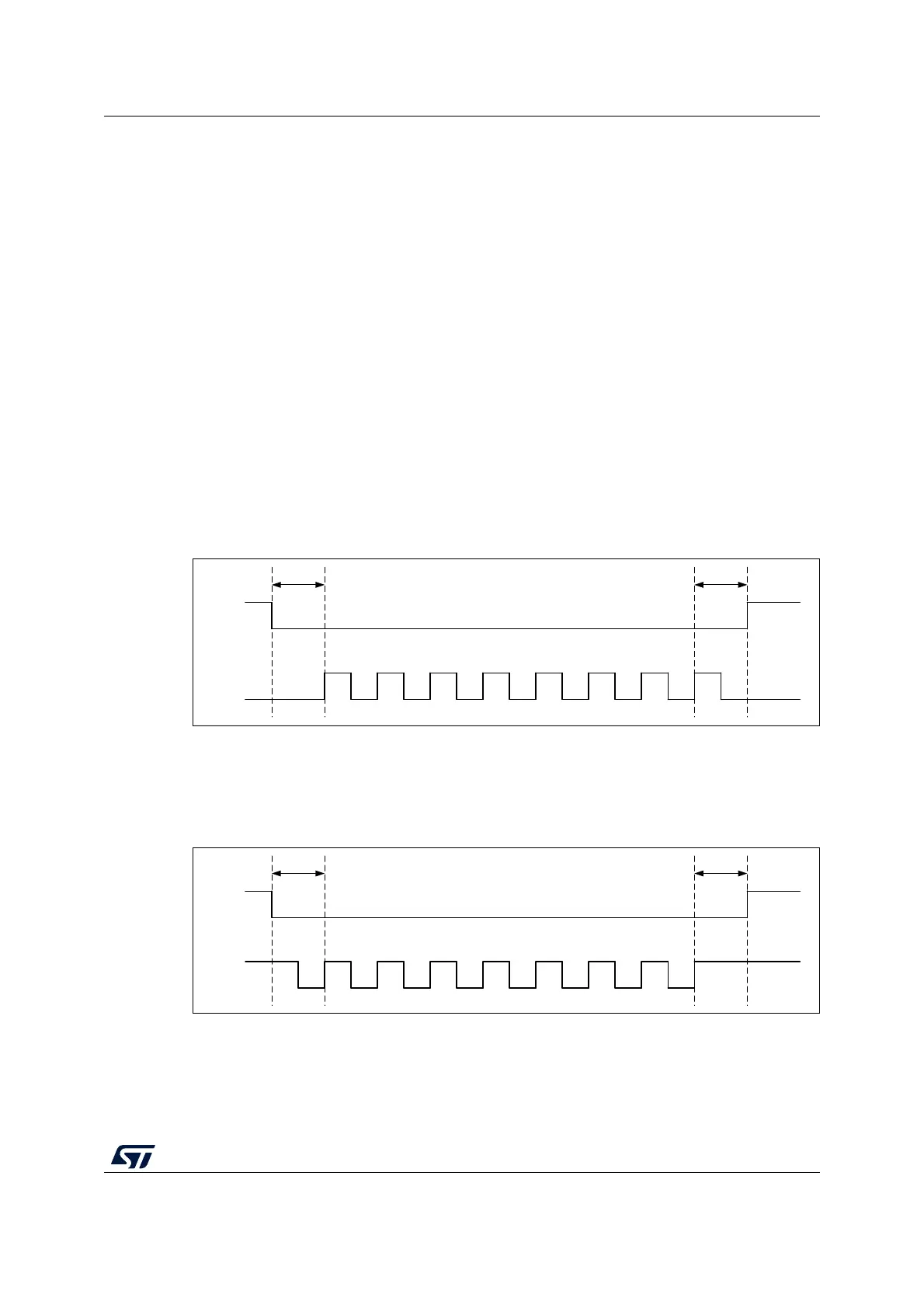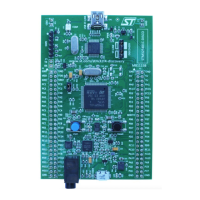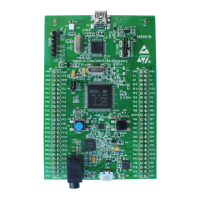RM0402 Rev 6 301/1163
RM0402 Quad-SPI interface (QUADSPI)
316
In indirect mode, the BUSY bit is reset once the QUADSPI has completed the requested
command sequence and the FIFO is empty.
In automatic-polling mode, BUSY goes low only after the last periodic access is complete,
due to a match when APMS
= 1, or due to an abort.
After the first access in memory-mapped mode, BUSY goes low only on a timeout event or
on an abort.
Any operation can be aborted by setting the ABORT bit in the QUADSPI_CR. Once the
abort is completed, the BUSY bit and the ABORT bit are automatically reset, and the FIFO
is flushed.
Note: Some Flash memories might misbehave if a write operation to a status registers is aborted.
12.3.15 nCS behavior
By default, nCS is high, deselecting the external Flash memory. nCS falls before an
operation begins and rises as soon as it finishes.
When CKMODE = 0 (“mode0”, where CLK stays low when no operation is in progress) nCS
falls one CLK cycle before an operation first rising CLK edge, and nCS rises one CLK cycle
after the operation final rising CLK edge, as shown in
Figure 55.
Figure 55. nCS when CKMODE = 0 (T = CLK period)
When CKMODE=1 (“mode3”, where CLK goes high when no operation is in progress) and
DDRM=0 (SDR mode), nCS still falls one CLK cycle before an operation first rising CLK
edge, and nCS rises one CLK cycle after the operation final rising CLK edge, as shown in
Figure 56.
Figure 56. nCS when CKMODE = 1 in SDR mode (T = CLK period)
When CKMODE = 1 (“mode3”) and DDRM = 1 (DDR mode), nCS falls one CLK cycle
before an operation first rising CLK edge, and nCS rises one CLK cycle after the operation
final active rising CLK edge, as shown in
Figure 57. Because DDR operations must finish
with a falling edge, CLK is low when nCS rises, and CLK rises back up one half of a CLK
cycle afterwards.

